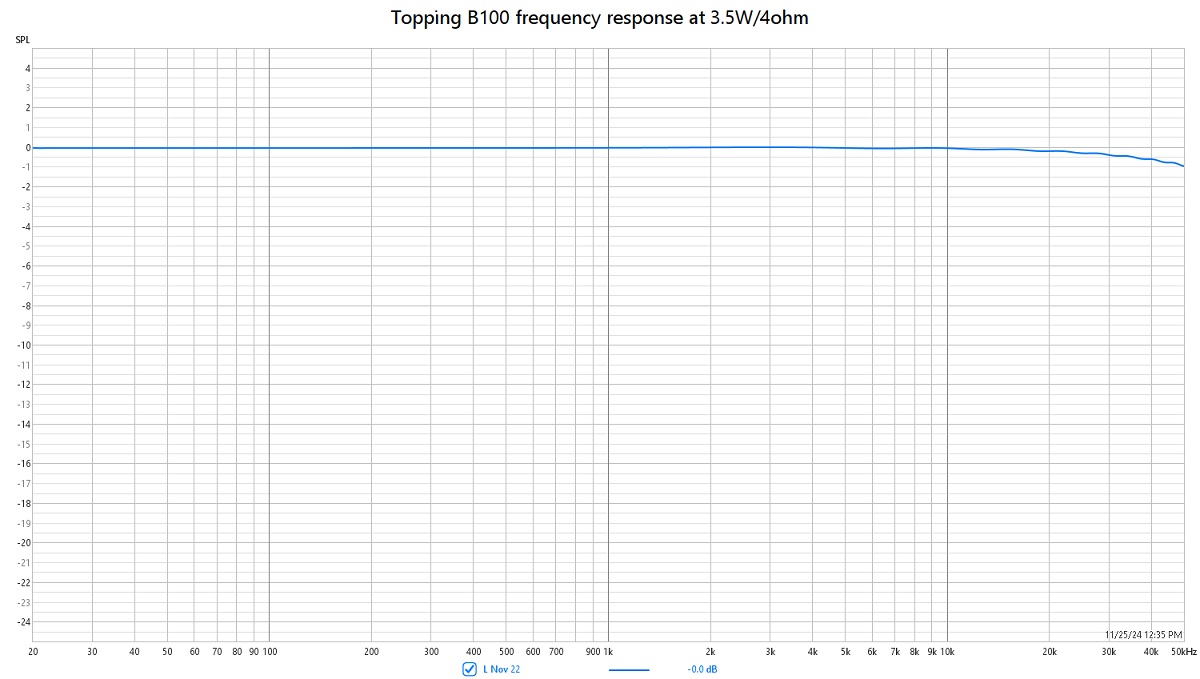
Topping B100 review
The follow-up to this review, after communicating with Topping support, may be found here.
This test review was performed to comply with FTC: 16 CFR Part 432 (July 5, 2024) - Power Output Claims for Amplifiers Utilized in Home Entertainment Products
The Topping B100 is a small, affordable, 1-channel Class B amplifier. It claims excellent distortion parameters and output power of 100W/4ohm/THD+N<1%.

1. Test conditions
The amplifier was tested with a power supply sent by Shenzenaudio with the amplifier. 4ohm resistive load was used. As per the manufacturer, the rated output power should be 100W/4ohm/THD+N<1%.
Note: as with the RCA to XLR adapter cable only one half of the output BTL bridge was driven, the maximum possible rated power would have been 25W/4ohm.


2. Pre-conditioning
First of all, the amplifier should have been pre-conditioned at 1/8 of the rated power for one hour. This was impossible as the amplifier shut down itself after a while. Pre-conditioning was not used.
3. Frequency response
Frequency response was measured at 3.5W output power into 4ohm load.

One can see that frequency response is flat in the audio band.
4. Power frequency response
Was impossible to measure, as the amplifier shut down itself at quite low power level during the frequency sweep.
5. Distortion
5.1. Distortion at 4.4W/4ohm

Both distortion and noise are very low at this power level.
5.2. CCIF IMD distortion 19+20kHz at 2W/4ohm

19+20kHz IMD distortion is extremely low.
5.3. THD vs. output voltage into 4ohm load at 50Hz and 1kHz with measurement bandwidth 90kHz. The steeped sine test uses 0.8s long sine bursts with 0.5s interval between them.
1kHz

The amplifier shut down itself near 19W in this test.
50Hz

The amplifier shut down itself at 5W with the 50Hz stepped sine.
5.4. THD vs. frequency at 3.5W/4ohm

5.5. THD vs. frequency at rated power
Not tested for the reason explained here above.
6. Conclusion
Topping B100 test piece had extremely low noise and distortion and very flat frequency response. However, with the RCA to XLR adapter cable it was not able to approach to the company specs in rated power, due to amplifier internal topology.
Pavel Macura 11/25/2024